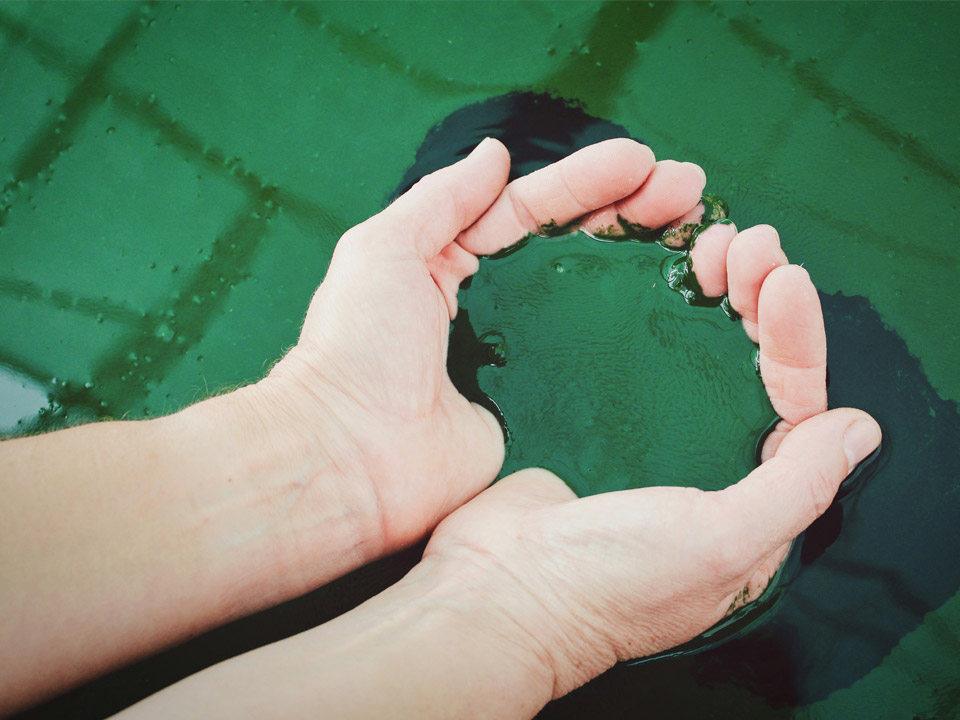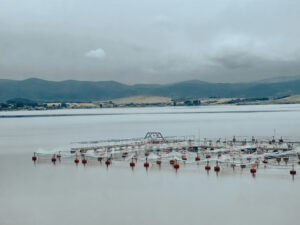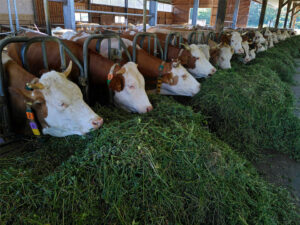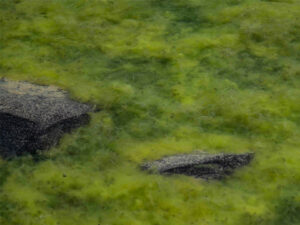Growing Spirulina at home can be a rewarding and sustainable hobby. This blue-green algae, known for its high nutritional value, is relatively easy to cultivate with the right techniques and some patience. Here, we’ll go through the best practices to ensure a healthy and bountiful Spirulina harvest.
Choosing the right medium for growing Spirulina
The first step in growing Spirulina is selecting the appropriate growth medium. Zarrouk medium is commonly recommended due to its optimal nutrient balance for Spirulina. You can purchase our Zarrouk medium here. Follow the directions on the packaging. If you decide to create your own growing medium, ensure you follow a reliable recipe to maintain the right pH and nutrient levels.
Setting up your cultivation system
Spirulina thrives in shallow, well-lit environments. Here’s how to set up your cultivation system:
- Container: Use a shallow, wide container. Clear plastic tubs or glass aquariums work well.
- Light: Spirulina needs plenty of light but avoid direct sunlight to prevent overheating. A grow light with a timer can provide consistent lighting. Aim for about 12-16 hours of light per day, followed by 8-12 hours of darkness to mimic natural conditions. After inoculation, you can start with moderate light and gradually increase it to full intensity over a few days.
- Temperature: Maintain a temperature between 20-35°C (68-95°F). An aquarium heater can help if you’re growing Spirulina indoors in cooler climates. Use a thermometer to monitor the water temperature regularly.
Cleanliness and sanitization
Maintaining a clean growing environment is crucial to prevent contamination and ensure a healthy Spirulina culture. Here are some tips:
- Sanitize equipment: Before starting, sanitize all your equipment with a mild bleach solution (1 tablespoon of bleach per gallon of water). Rinse thoroughly with distilled water to remove any bleach residue.
- Clean hands: Always wash your hands before handling your Spirulina culture or equipment.
- Regular maintenance: Clean your container and tools regularly to prevent the buildup of unwanted algae or bacteria.
I remember my first attempt at growing Spirulina. Everything seemed fine until the culture turned murky. I realized I hadn’t been thorough with sanitizing my equipment. It was a setback, but it taught me the importance of cleanliness right from the start.
Maintaining water quality
Spirulina is resilient but maintaining optimal water quality is crucial. Use distilled water to avoid contaminants. Monitor the water’s pH regularly; it should stay between 8 and 10. Here’s how to manage it:
- Measuring pH: Use pH test strips or a digital pH meter to check the pH of your culture. Test the water at least once a week. I started with pH strips because they’re cheap and easy to use. Eventually, I switched to a digital pH meter, which gave more precise readings.
- Adjusting pH: If the pH is too low, add a small amount of baking soda to raise it. If the pH is too high, dilute some vinegar with water and add it gradually until the desired pH is reached.
Aeration and mixing
Proper aeration ensures even nutrient distribution and prevents stagnation. A small aquarium air pump can provide adequate circulation. Gently stir the culture daily to keep the algae suspended and prevent clumping.
Timeline and harvesting
Spirulina grows rapidly, and you can start harvesting within a few weeks. Here’s a general timeline and signs that it’s time to harvest:
- Initial growth: During the first week, the Spirulina culture will establish itself. The water will gradually turn a deeper green as the algae multiply.
- Two to four weeks: The culture thickens, and you should see a significant increase in biomass. At this stage, the pH and temperature should be monitored closely to ensure optimal growth.
- Ready to harvest: Spirulina is ready to harvest when the culture becomes dense, and you can no longer see through the water. The algae should form a thick layer on the surface.
Here’s a simple harvesting method:
- Filter: Use a fine mesh cloth or a coffee filter to collect the Spirulina.
- Rinse: Rinse the collected Spirulina with clean water to remove any residual growing medium.
- Store: Store the fresh Spirulina in the refrigerator and consume within a few days. Alternatively, you can dry it for longer storage.
Common issues and solutions
- Algae Contamination: Sometimes other types of algae can invade your Spirulina culture. Maintain cleanliness and promptly remove any visible contaminants.
- pH Fluctuations: Regularly check the pH and adjust as necessary. Consistent monitoring can prevent extreme fluctuations that stress the Spirulina.
- Temperature Control: Use a thermometer and an aquarium heater to maintain a stable temperature, especially in fluctuating climates.
Benefits of growing Spirulina
Not only is Spirulina nutritious—packed with protein, vitamins, and antioxidants—but growing it at home is environmentally friendly. It requires minimal water compared to traditional crops and can contribute to a more sustainable lifestyle.
Growing Spirulina might seem daunting at first, but with the right setup and a bit of dedication, you’ll find it’s a straightforward and rewarding process. Whether you’re looking to boost your diet with a superfood or explore sustainable living practices, cultivating Spirulina is a great step forward.
By following these practices, you can ensure a successful Spirulina cultivation experience. Remember, consistency and attention to detail are key. Enjoy the process, and reap the benefits of this incredible algae!
You can purchase our Spirulina starter culture here.



